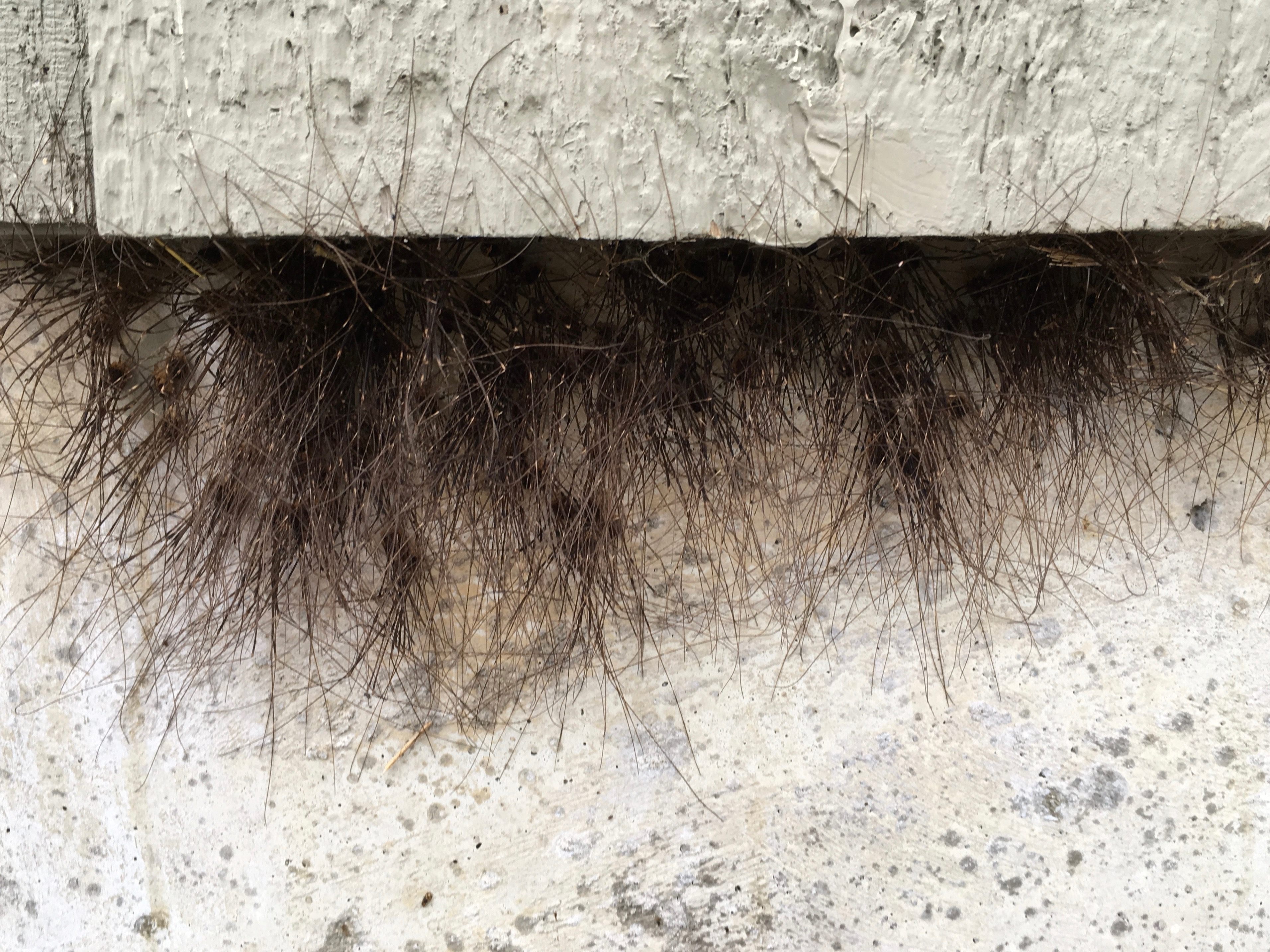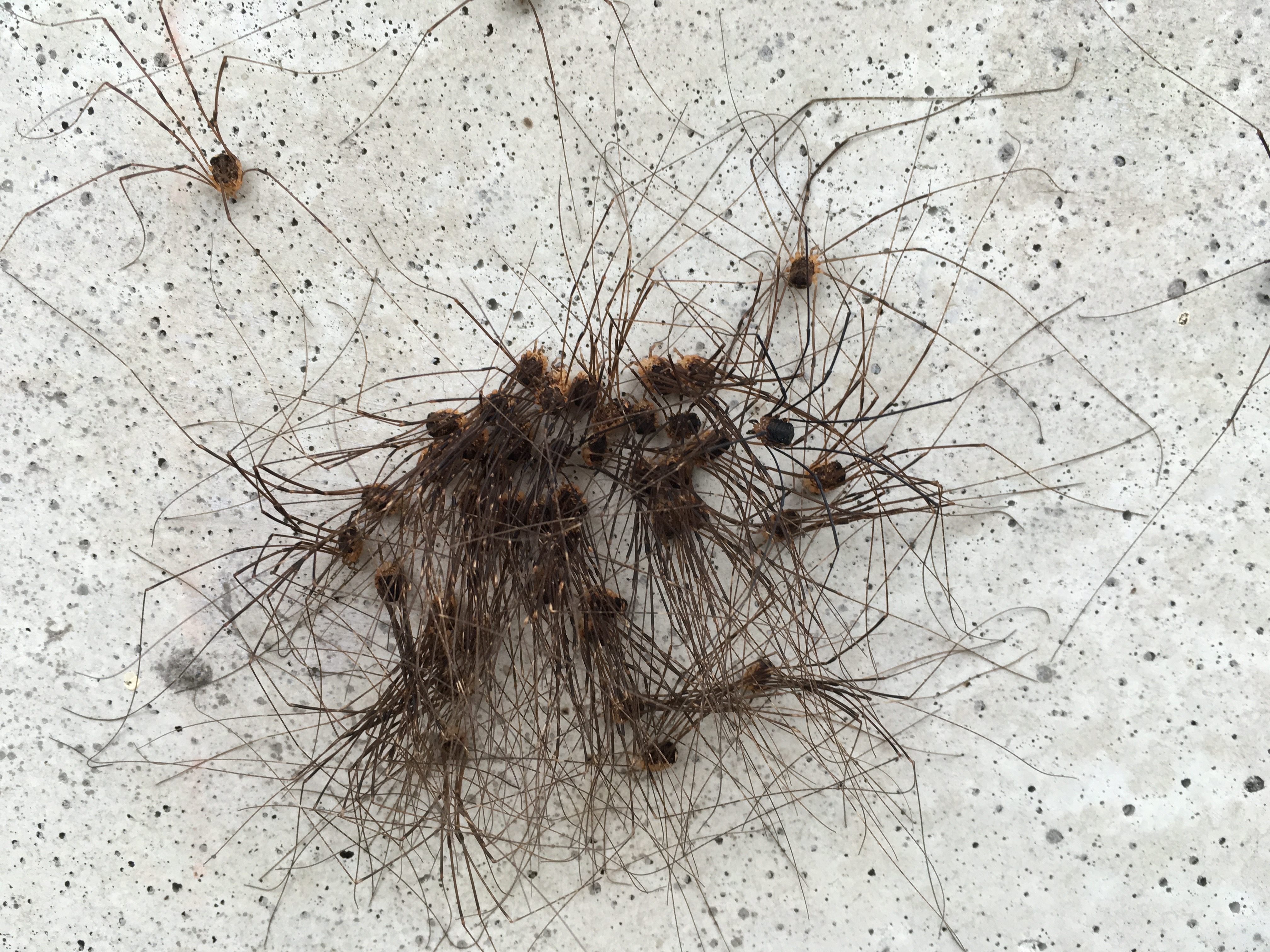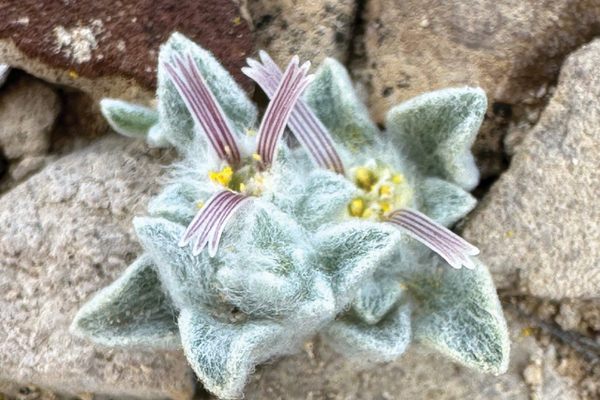Why Does It Look Like This National Park Building in Alaska Is Sprouting Hair?
The answer might not sit well with arachnophobes.

Leading up to Halloween, as autumn set into the landscape of Southeastern Alaska, the administrative building at Glacier Bay National Park started sprouting creepy hair. The coarse brown globs would disappear by night and reform every morning, “like a roving mole,” says Ingrid Nixon, the park’s Chief Interpreter.
Upon closer inspection, it turns out that the globs were not hair at all: They were legs, thousands of them. The mole was in fact a massive, tightly-packed cluster of daddy longlegs.
Nixon says the timing was perfect, as it created a creepy mysterious sight in the lead up to Halloween. “I think everybody’s first reaction is eek, because it kind of just creeps you out,” she says. “Then it’s fascinating because in some of the cases, the little bodies are so tucked up, all you see is the legs and it really looks like hair.”
This behavior is common among daddy longlegs (also known as harvestmen), according to Prashant Sharma, an evolutionary biologist at University of Wisconsin, but there’s no straightforward explanation as to why they do it.
Sharma says one thing scientists do know is that the behavior happens more often in dry weather, such as the Alaska autumn, when humidity drops along with temperatures and the days get shorter. Daddy longlegs are prone to drying out, he says, so bunching together allows them to create a microenvironment. “It’s kind of like body heat, but it’s body humidity,” he says. “They are huddling together to maintain that.”

Another possible reason could be for protection. Because they don’t have venom or spin silk (two traits that make them distinct from spiders), they might cluster together to ward off predators. Daddy longlegs can release a stinky secretion, and if the whole group does this at once, it is more effective. “They may have more powerful repugnatory secretions by virtue of having so many individuals releasing this really stinky smell at the same time,” says Sharma.
Daddy longlegs are also nocturnal, so when they pack together during the day, they are resting. Sharma says the animals in the middle of the aggregation will hold onto the side of the wall with their mouths, and the outer layer of individuals will latch on with their famous long spindly legs. At night when they disperse, they go scavenging or hunting for small insects.
Sharma says that while the behavior is common, the clusters of hundreds found this month in Alaska are bigger than usual. A more common sight would be a group of 20 to 40. The biggest grouping ever recorded was more than 300,000 individuals found in southwestern China in 2005, and there are many YouTube videos of massive writhing balls of daddy longlegs on the internet (click that link at your peril). Sharma says their usual aggregation sites are the sides of trees, inside caves, and on walls with crevices, such as the Glacier Bay National Park building.
Nixon says visitors, who came to the park looking for majestic glacier vistas, were surprised to find a building sprouting legs. “Forget about those grizzly bears, let’s just show you these daddy longlegs,” she says, laughing.
But, Nixon adds, reveling in the unexpected is part of what nature is all about.
“Nature is so full of fascinating surprising things, and so the fact that we’re all leaning closer and saying, ‘Gosh why are they doing that?’ It’s one of those cool things,” she says, “Nature just keeps us guessing.”
















Follow us on Twitter to get the latest on the world's hidden wonders.
Like us on Facebook to get the latest on the world's hidden wonders.
Follow us on Twitter Like us on Facebook